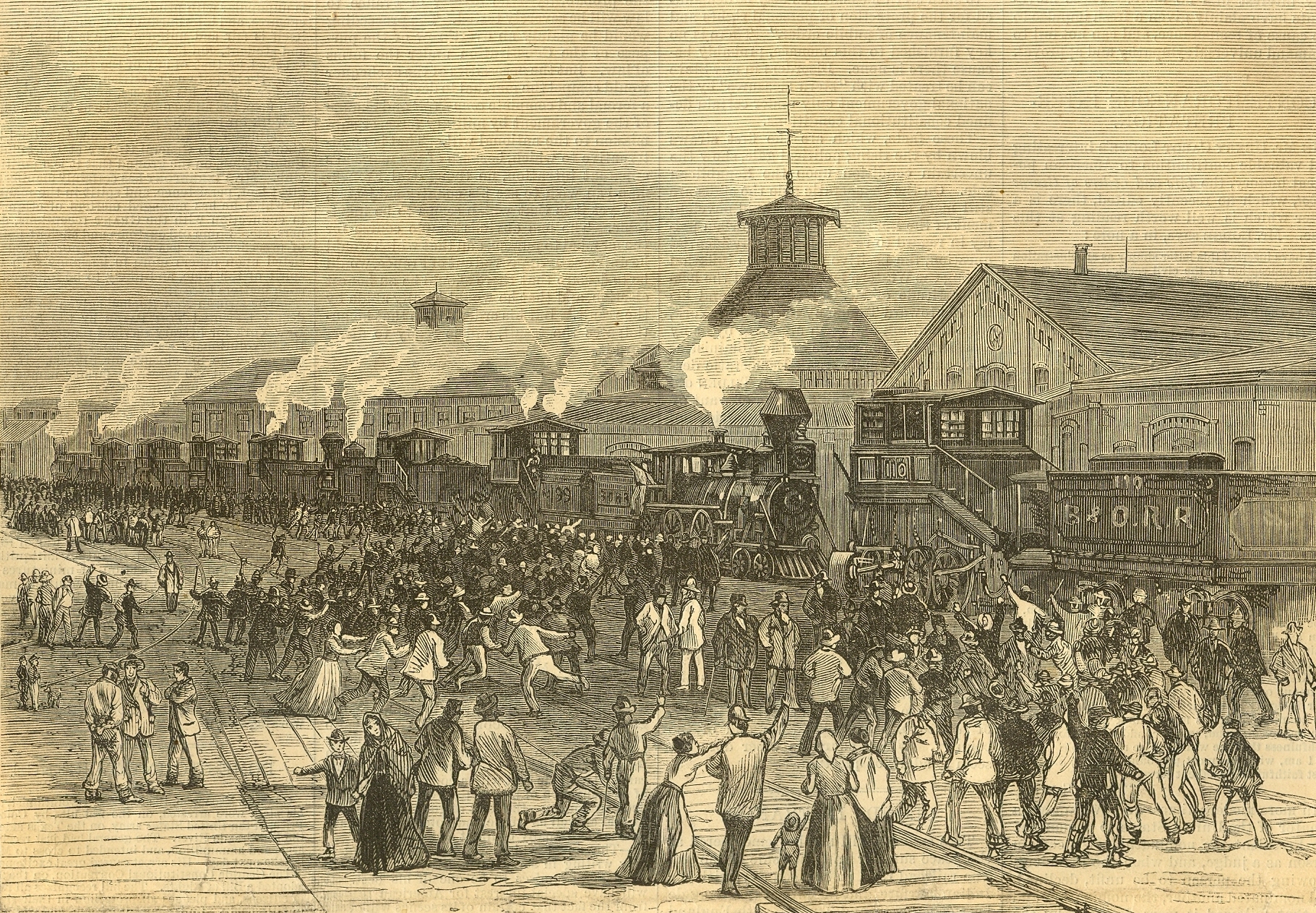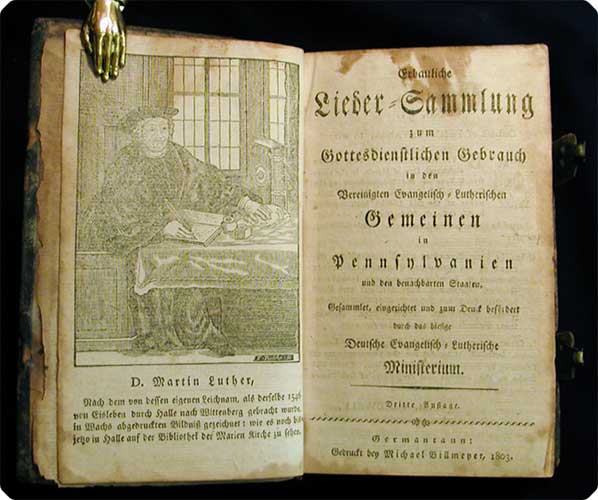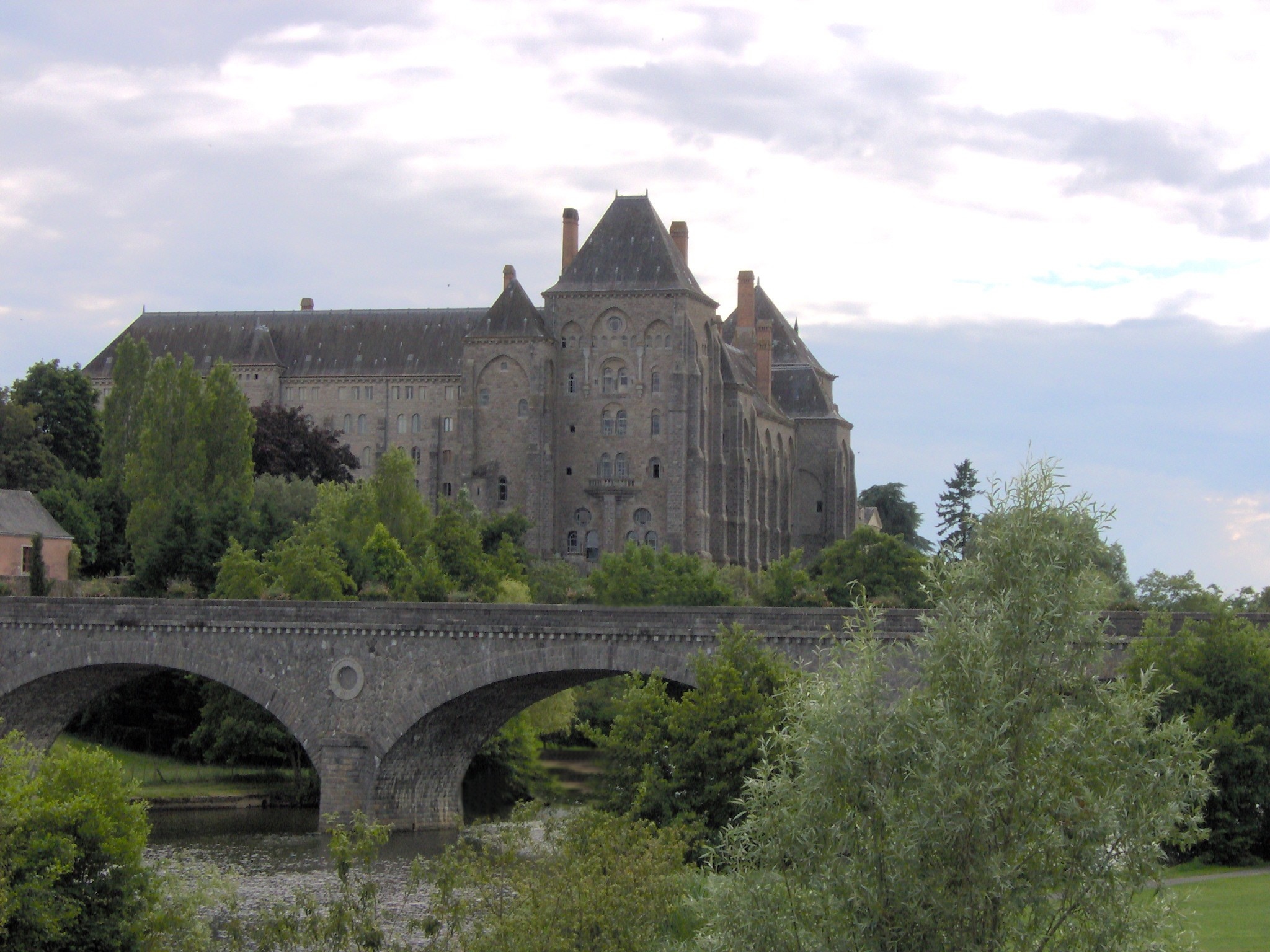|
Charles Porterfield Krauth
Charles Porterfield Krauth (March 17, 1823 – January 2, 1883) was a pastor, theologian and educator in the Lutheran branch of Christianity. He is a leading figure in the revival of the Lutheran Confessions connected to Neo-Lutheranism in the United States. Education and parish ministry Born in Martinsburg, Virginia to minister Charles Philip Krauth. Young Krauth graduated from Gettysburg College (then called Pennsylvania College) in 1839 (while his father served as that school's president), and two years later from the Lutheran Theological Seminary at Gettysburg. From 1841-1852, the younger Rev. Krauth served congregations in Baltimore, Maryland, Martinsburg, and Winchester, Virginia. During the winter of 1853-54, for three months he served the Dutch Reformed congregation in Saint Thomas in the Virgin Islands, where he was visiting on account of his wife's illness. Krauth later published a sketch of this visit entitled ''A Winter and Spring in the Danish West Indies''. Up ... [...More Info...] [...Related Items...] OR: [Wikipedia] [Google] [Baidu] |
Martinsburg, West Virginia
Martinsburg is a city in Berkeley County, West Virginia, United States, and its county seat. The population was 18,773 at the 2020 United States census, 2020 census, making Martinsburg the largest city in the Eastern Panhandle of West Virginia and the List of municipalities in West Virginia, sixth-most populous city in the state. It is a principal city of the Hagerstown metropolitan area, Hagerstown–Martinsburg metropolitan area extending into Maryland, which had 293,844 residents in 2020. History Martinsburg was established by an act of the Virginia General Assembly that was adopted in December 1778 during the American Revolutionary War. Founder Major General Adam Stephen named the gateway town to the Shenandoah Valley along Tuscarora Creek (Opequon Creek), Tuscarora Creek in honor of Colonel Thomas Bryan Martin, a nephew of Thomas Fairfax, 6th Lord Fairfax of Cameron. Aspen Hall (Martinsburg, West Virginia), Aspen Hall, a Georgian mansion, is the oldest house in the city. Pa ... [...More Info...] [...Related Items...] OR: [Wikipedia] [Google] [Baidu] |
Book Of Concord
''The Book of Concord'' (1580) or ''Concordia'' (often referred to as the ''Lutheran Confessions'') is the historic doctrinal standard recognized as authoritative by many Lutheran church bodies since the 16th century. It consists of ten creedal documents and is also known as the symbolical book of the Evangelical Lutheran Church. ''The Book of Concord'' was published in German on June 25, 1580, in Dresden, the fiftieth anniversary of the presentation of the '' Augsburg Confession'' to Emperor Charles V at the Diet of Augsburg. The authoritative Latin edition was published in 1584 in Leipzig. Those who accept it as their doctrinal standard recognize it to be a faithful exposition of the Bible. The Holy Scriptures are set forth in ''The Book of Concord'' to be the sole, divine source and norm of all Christian doctrine. Origin and arrangement ''The Book of Concord'' was compiled by a group of theologians led by Jakob Andreae and Martin Chemnitz at the behest of their ruler ... [...More Info...] [...Related Items...] OR: [Wikipedia] [Google] [Baidu] |
General Council (Lutheran)
The General Council of the Evangelical Lutheran Church in North America, or, in brief, the General Council was a conservative Lutheran church body, formed as a reaction against the new "Americanized Lutheranism" of Samuel Simon Schmucker and the Evangelical Lutheran General Synod of the United States of North America. The General Council was founded in November, 1867, with ten Lutheran synods becoming members Founded at the instigation of the Pennsylvania Ministerium, the General Council placed special emphasis on the Lutheran Confessions and their role in the life of the church. In 1872, the General Council adopted the Akron-Galesburg Rule, written by Charles Porterfield Krauth, reserving Lutheran pulpits for Lutheran pastors and Lutheran altars for Lutheran communicants. Theodore Emanuel Schmauk was the president of the General Council from 1903 until the formation of the United Lutheran Church in America (ULCA) in 1918. The ULCA was formed by the merger of three indepen ... [...More Info...] [...Related Items...] OR: [Wikipedia] [Google] [Baidu] |
William Passavant
William Alfred Passavant (October 9, 1821 – June 3, 1894) was a Lutheran minister who brought the Lutheran Deaconess movement to the United States. He is commemorated in the Calendar of Saints of the Lutheran Church on November 24 with Justus Falckner and Jehu Jones. Early life William Alfred Passavant was born in 1821 in Zelienople, Pennsylvania, the third and youngest son of Phillipe Louis Passavant and Fredericka Wilhelmina Basse (nicknamed "Zelie," hence the town's name). His grandfather, Baron Dettmar Basse, born in Iserlohn in the Ruhr Valley in what was then the Grand Duchy of Hesse and later became Germany, spent a decade in Paris as a diplomat and merchant before fleeing the Napoleonic Wars and emigrating to Philadelphia and then Pittsburgh in 1801. Drawn by the prospect of religious freedom and economic opportunity, the widower Baron bought 10,000 acres along Connoquenessing Creek in Butler County, Pennsylvania, began building a stone, brick, and wood framed castl ... [...More Info...] [...Related Items...] OR: [Wikipedia] [Google] [Baidu] |
Pennsylvania Ministerium
The Pennsylvania Ministerium was the first Lutheran church body in North America. With the encouragement of Henry Melchior Muhlenberg (1711–1787), the Ministerium was founded at a Church Conference of Lutheran clergy on August 26, 1748. The group was known as the "German Evangelical Lutheran Ministerium of North America" until 1792, when it adopted the name "German Evangelical Lutheran Ministerium of Pennsylvania and Adjacent States". The Pennsylvania Ministerium, also referred to as the Ministerium of Pennsylvania, was the source of the first Lutheran liturgy in America. Because of its unique place in the history of North American Lutheranism, the Ministerium continued to influence the church politics of Lutherans in America into the 20th century. History Lutherans in North America In 1638, Swedish settlers, colonizing north along the Delaware River from the New Sweden colony, established residences in what would become Philadelphia, at a place called ''Wiccaco'' by the lo ... [...More Info...] [...Related Items...] OR: [Wikipedia] [Google] [Baidu] |
Wilhelm Loehe
Wilhelm may refer to: People and fictional characters * William Charles John Pitcher, costume designer known professionally as "Wilhelm" * Wilhelm (name), a list of people and fictional characters with the given name or surname Other uses * Wilhelm (name), disambiguation page for people named Wilhelm ** Wilhelm II (1858–1941), king of Prussia and emperor of Germany from 1888 until his abdication in 1918. * Mount Wilhelm, the highest mountain in Papua New Guinea * Wilhelm Archipelago, Antarctica * Wilhelm (crater), a lunar crater * Wilhelm scream, stock sound effect used in many movies and shows See also * Wilhelm scream, a stock sound effect * SS ''Kaiser Wilhelm II'', or USS ''Agamemnon'', a German steam ship * Wilhelmus, the Dutch national anthem * William Helm William Helm (March 9, 1837 – April 10, 1919) was an American Sheep-rearing, sheep farmer and among the early pioneer settlers of Fresno County, California, Fresno County, California. He was instrumental in t ... [...More Info...] [...Related Items...] OR: [Wikipedia] [Google] [Baidu] |
Oxford Movement
The Oxford Movement was a theological movement of high-church members of the Church of England which began in the 1830s and eventually developed into Anglo-Catholicism. The movement, whose original devotees were mostly associated with the University of Oxford, argued for the reinstatement of some older Christian traditions of faith and their inclusion into Anglican liturgy and theology. They thought of Anglicanism as one of three branches of the " one, holy, catholic, and apostolic" Christian Church. Many key participants subsequently converted to Roman Catholicism. Tractarianism, the movement's philosophy, was named after a series of publications, the '' Tracts for the Times'', written to promote the movement. Tractarians were often disparagingly referred to as "Newmanites" (before 1845) and "Puseyites", after two prominent Tractarians, John Henry Newman and Edward Bouverie Pusey. Other well-known Tractarians included John Keble, Charles Marriott, Richard Froude, Rob ... [...More Info...] [...Related Items...] OR: [Wikipedia] [Google] [Baidu] |
Prosper Guéranger
Prosper Louis Pascal Guéranger (; 4 April 1805 – 30 January 1875) was a French priest and Benedictine monk, who served for nearly 40 years as the abbot of the monastery of Solesmes (which he founded among the ruins of a former priory at Solesmes). Through the new Abbey of Solesmes, he became the founder of the French Benedictine Congregation (now the Solesmes Congregation), which re-established Benedictine monastic life in France after it had been wiped out by the French Revolution. Guéranger was the author of '' The Liturgical Year'', a popular commentary which covers every day of the Catholic Church's liturgical cycles in 15 volumes. He was well regarded by Pope Pius IX, and was a proponent of the dogmas of the Immaculate Conception and of papal infallibility. Guéranger is credited with reviving the Benedictine Order in France, and with promoting the adoption of the liturgical books of the Roman Rite throughout France, an important element in the Liturgical Movement, ... [...More Info...] [...Related Items...] OR: [Wikipedia] [Google] [Baidu] |
Evangelical Catholic
The term Evangelical Catholic (from ''Catholic (term), catholic'' meaning ''universal'' and ''evangelical'' meaning ''Gospel-centered'') is used in Lutheranism, with those calling themselves Evangelical Catholic Lutherans or Lutherans of Evangelical Catholic churchmanship stressing the catholicity of historic Lutheranism in liturgy (such as the Mass (liturgy)#Lutheranism, Mass), beliefs (such as the perpetual virginity of Mary), practices (such as genuflection), and doctrines (such as apostolic succession). Evangelical Catholics teach that Lutheranism at its core "is deeply and fundamentally catholic". The majority of Evangelical Catholic Lutheran clergy and parishes are members of mainstream Lutheran denominations (such as the Church of Sweden), though certain Lutheran denominations, such as the Lutheran Church - International, have a solidly Evangelical Catholic churchmanship. Various apostolates and religious orders exist, which herald Evangelical Catholic principles within Luthe ... [...More Info...] [...Related Items...] OR: [Wikipedia] [Google] [Baidu] |
Philip Schaff
Philip Schaff (January 1, 1819 – October 20, 1893) was a Swiss-born, German-educated Protestant theologian and ecclesiastical historian, who spent most of his adult life living and teaching in the United States. Life and career Schaff was born in Chur, Switzerland, and educated at the gymnasium of Stuttgart. His father died when he was young and he was sent to an orphanage. At the universities of Tübingen, Halle and Berlin, he was successively influenced by Ferdinand Christian Baur and Schmid, by Friedrich August Tholuck and Julius Müller, by David Strauss and, above all, Johann August Wilhelm Neander. At Berlin in 1841 he took the degree of Bachelor of Divinity and passed examinations for a professorship. He then traveled through Italy and Sicily as tutor to Baron Krischer. In 1842, he was '' Privatdozent'' in the University of Berlin, where he lectured on exegesis and ecclesiastical history. In 1843, he was called to become Professor of Church History and Bibli ... [...More Info...] [...Related Items...] OR: [Wikipedia] [Google] [Baidu] |
John Williamson Nevin
John Williamson Nevin (February 20, 1803June 6, 1886) was an American theologian and educator. He was born in the Cumberland Valley, near Shippensburg, Franklin County, Pennsylvania. He was the father of noted sculptor and poet Blanche Nevin. Biography He was a nephew of Hugh Williamson of North Carolina, and was of Scottish blood and Presbyterian training. He graduated at Union College in 1821; studied theology at Princeton Theological Seminary in 1823–1828, being in 1826–28 in charge of the classes of Charles Hodge; was licensed to preach by the Carlisle Presbytery in 1828; and in 1830–1840 was professor of Biblical literature in the newly founded Western Theological Seminary (now Pittsburgh Theological Seminary) of Allegheny, Pennsylvania. But under the influence of Neander, he was gradually breaking away from " Puritanic Presbyterianism", and, in 1840, having resigned his chair in Allegheny, he was appointed professor of theology in the German Reformed Theological ... [...More Info...] [...Related Items...] OR: [Wikipedia] [Google] [Baidu] |



